Steve McQueen presents a portrait of protest in Britain
Turner Contemporary’s groundbreaking exhibition Resistance reframes the history of protest, reminding us of photography’s political potential

Oscar-winning director Steve McQueen has built a career by consistently looking beyond the frame, revealing stories of everyday people and their extraordinary lives. His latest endeavour, Resistance, is no exception. Opening on 22 February at Turner Contemporary in Margate, the exhibition explores how acts of resistance have shaped life in the UK and the powerful role photography has played.
Director of Turner Contemporary, Clarrie Wallis, who first worked with McQueen in 2019 on Year 3 at Tate Britain, is co-curator of the exhibition. 'Resistance is really a continuation of Steve’s dedication to shining a light on untold stories,” says Wallis. 'We sought images that expressed how photographers both captured and piloted moments that moulded modern Britain.'
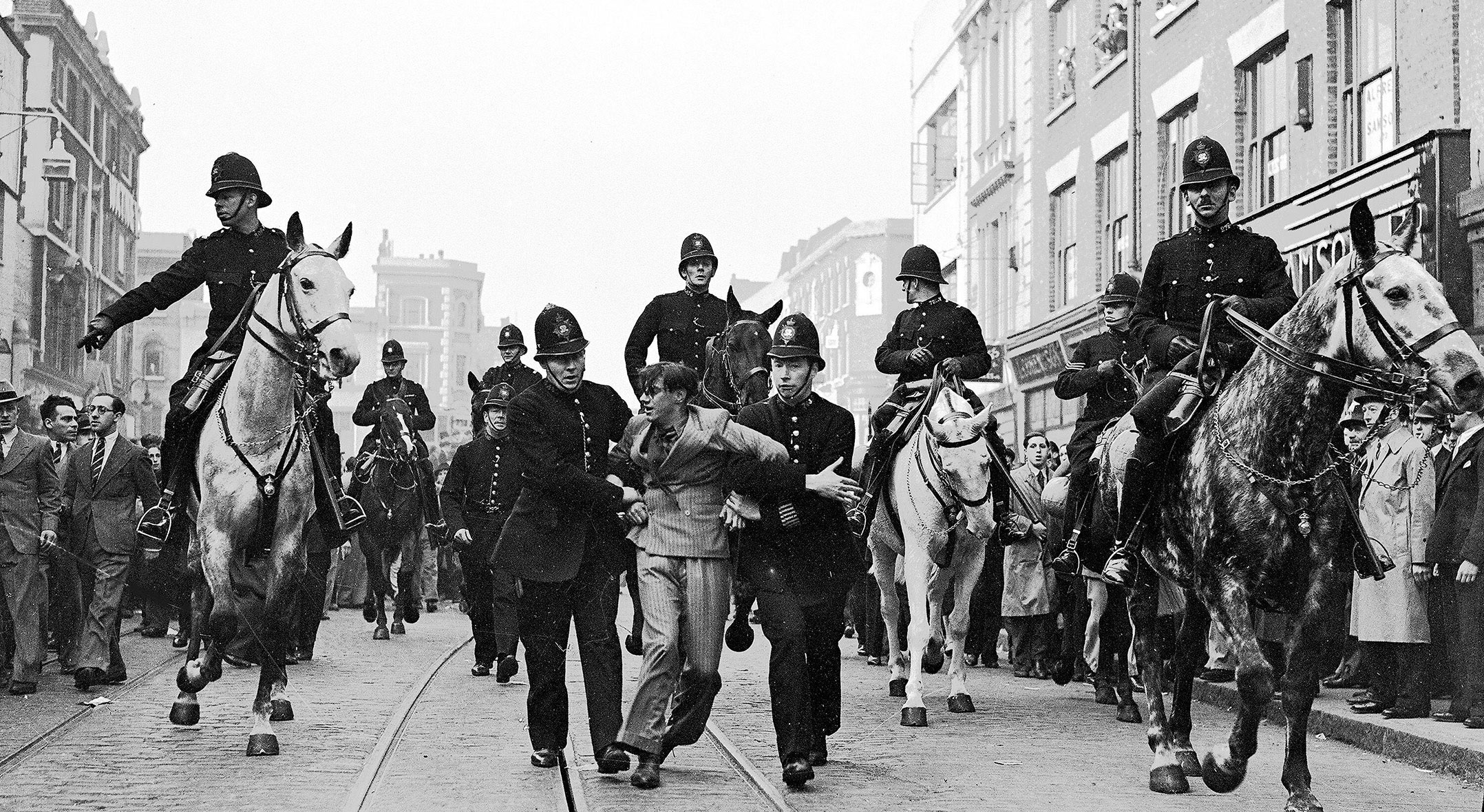
An anti-fascist demonstrator is taken away under arrest after a mounted baton charge during the Battle of Cable Street, London, 4 October 1936
The culmination of over four years of collaboration with researchers, Resistance spans a century of social and political justice movements, featuring photographs from the radical suffrage movement in 1903 to the largest-ever protest in Britain’s history against the Iraq War in 2003.
Here, no plight is given precedence over another—a sentiment underscored by McQueen’s stylistic decision to display all images in greyscale. Yet, Resistance achieves poignancy by dedicating its walls to lesser-known documentarians who captured obscure, often instigative single-issue campaigns. 'Social progress typically emerges from the margins,' reflects Wallis. 'Local communities identify problems and mobilise for change long before their concerns reach mainstream discourse.' Photographs of an early women-led campaign against the fashionable use of bird feathers in hats for instance, highlight the origins of the RSPB, while those of the 1932 Right to Roam mass trespass of the Kinder Scout, serve as precursors to the creation of British National Parks.
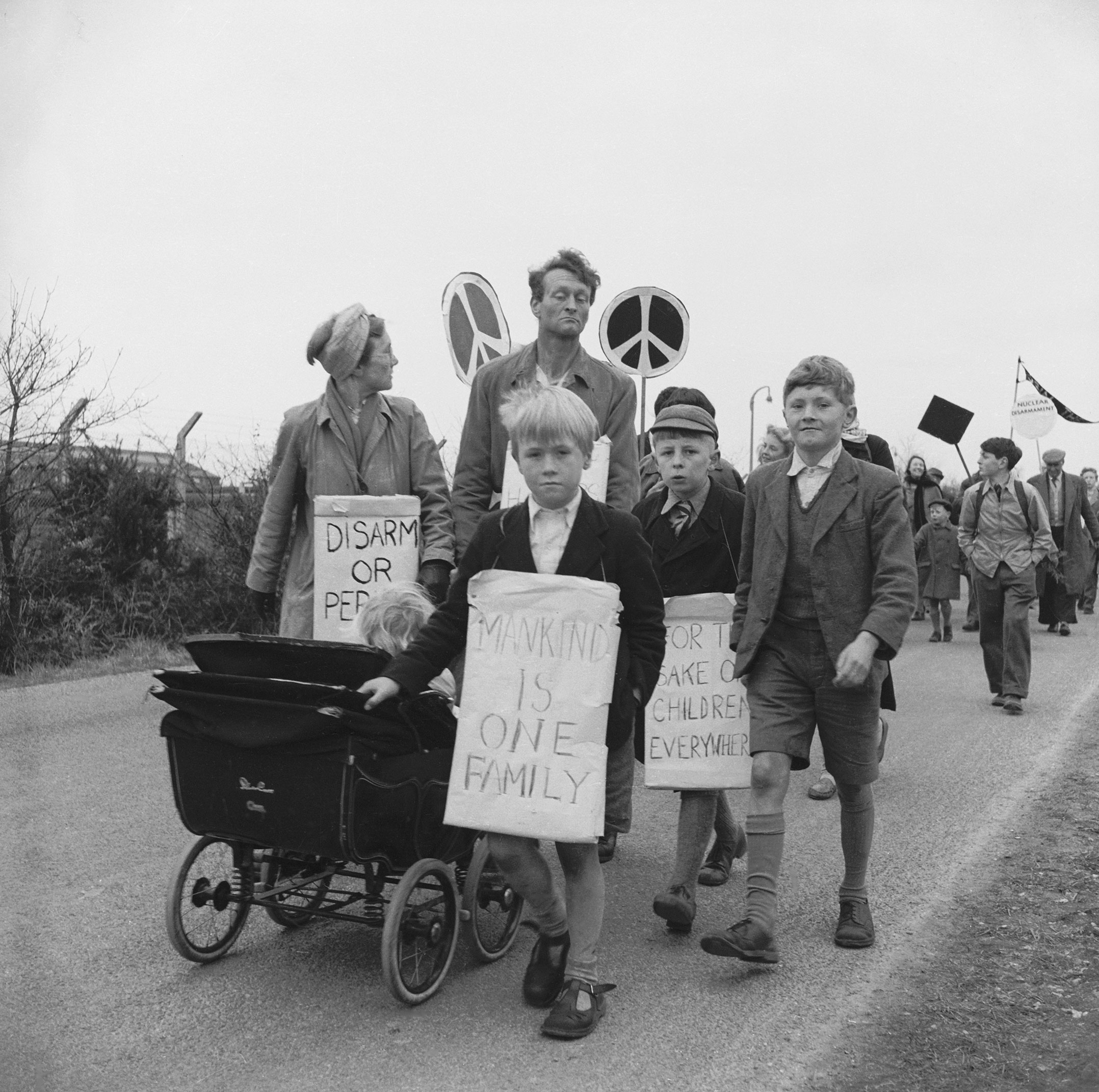
Anti-nuclear protesters marching to Aldermaston, Berkshire, May 1958
Despite mounting diverse swathes of history, the show maintains a sense of continuity, unified by the unyielding pursuit of change. Not only do we see causes reappearing across generations where individuals have walked – sometimes literally – in the footsteps of those that came before, but we also see similar strategies of resistance being adopted by different groups throughout time. In the early 20th century, for example, suffragettes would deliberately go limp when they were being arrested, a tactic photographed some 80 years later at the Greenham Common Women’s Peace Camp demonstrations.
Some of the most striking images in the exhibition act as a potent reminder that joy itself can be an act of resistance. 'This exhibition captures a spirit of defiance,' says Wallis. 'When marginalised communities claim their right to celebrate, it becomes a profound statement—nowhere more evident than in the origins of the Notting Hill Carnival.'
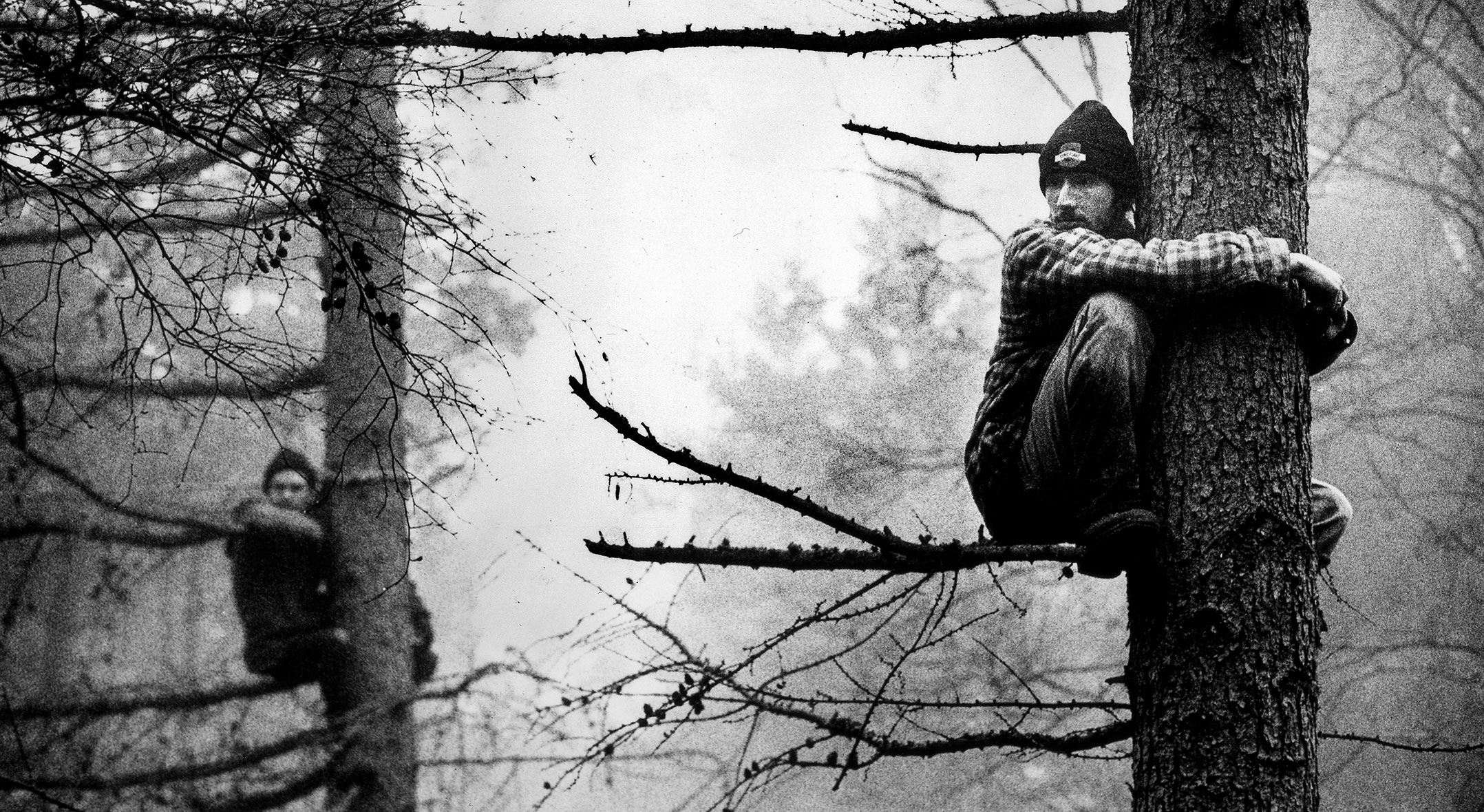
Allercombe tree village, on the route of the proposed A30 Honiton Bypass, Devon, December 1996
In 1959, after the murder of Antiguan Kelso Cochrane and amid racial tensions in West London, Trinidadian activist and journalist Claudia Jones responded by organising the first Caribbean carnival at St Pancras Town Hall. 'Jones understood that communal celebration could be a powerful form of resistance—transforming moments of trauma into expressions of cultural pride,' continues Wallis.
Receive our daily digest of inspiration, escapism and design stories from around the world direct to your inbox.
A similar spirit animated the 'kiss-ins' of the 1970s, when LGBTQ+ activists challenged widespread homophobia by staging public displays of affection. In an era of pervasive discrimination against gay people, these joyful demonstrations turned intimate moments into powerful acts of defiance.
Resistance also explores the camera’s democratic evolution as an instrument of change, intertwining covert surveillance images and community-based documentation with era-defining press reportage. 'Many grassroots photographers and community activists were using photography not just to document protest but also to shape their own narratives and build solidarity networks,' reflects Wallis.
Paul Trevor’s intimate portrayal of East London’s Bengali community in the 1970s exemplifies how community photography became a form of activism. As a founding member of Camerawork magazine, Trevor championed socially engaged, humanist photography and advocated for accessibility to the medium among marginalised groups. His 1978 work captured both the daily struggles of the Bengali community and the fury of 7,000 protesters following Altab Ali’s racially motivated murder, offering a vivid lens into the lived reality of resistance beyond the headlines.
Resistance is a moving paean to the activists and image-makers whose fortitude and resilience have guided modern activism. However, there is an undeniable bittersweetness to its vastness, a reminder that hard won rights can always be lost. For as long as there is injustice and violence, protest and its documentation will warrant our sustained attention.
Resistance is on show until 1 June at Turner Contemporary, Margate. The accompanying publication published by 4th Estate is out now.
Millen Brown-Ewens is a book publicist and art and music writer based in London. She has written for Artsy, AnOther, Dazed, Elephant, Huck, i-D and Plinth amongst others.
-
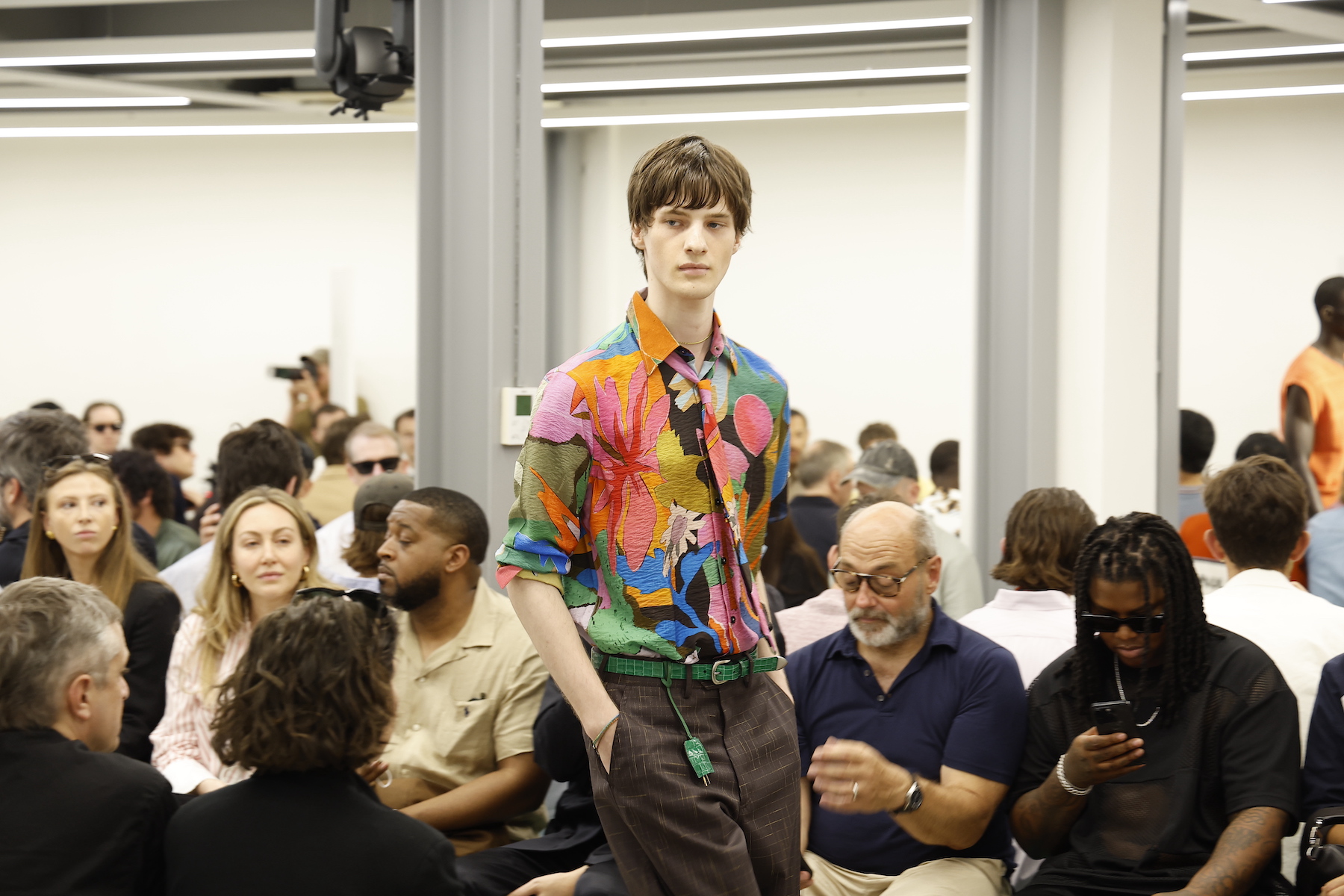 Paul Smith on his ‘lovely and simple’ Milan Fashion Week debut, which has been decades in the making
Paul Smith on his ‘lovely and simple’ Milan Fashion Week debut, which has been decades in the makingWallpaper* caught up with Paul Smith ahead of his travel-inspired S/S 2026 menswear show, held in his Milanese HQ as an expression of his longstanding love of Italy
-
 The best of refillable beauty design, edited by Wallpaper*
The best of refillable beauty design, edited by Wallpaper*Wallpaper’s pick of the best refillable beauty design includes make-up, skincare, fragrance and haircare with beautifully formed bottles, tubes and containers from the likes of Dries Van Noten, Davines and more
-
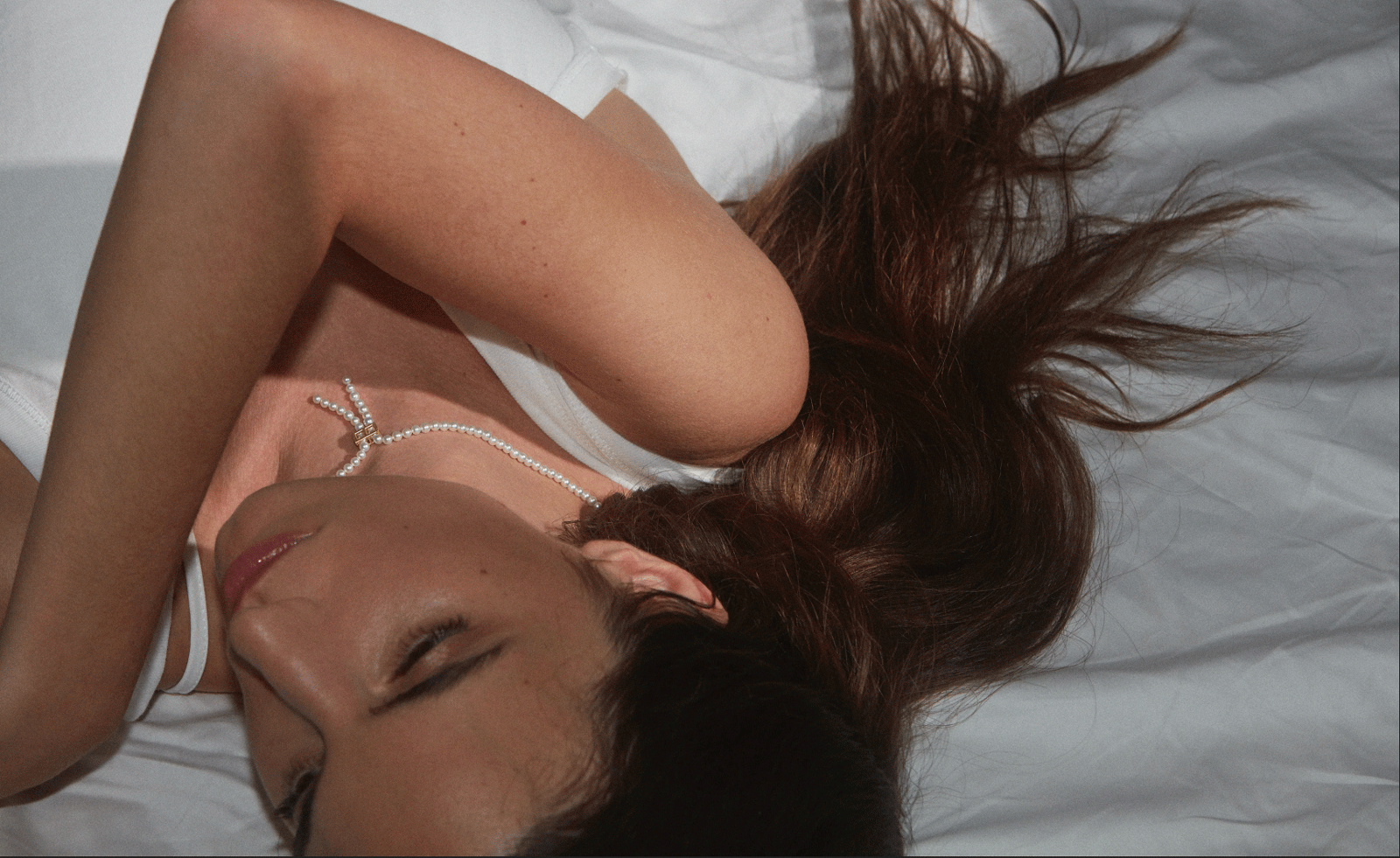 Wear Shihara’s minimalist strands of pearls and gold clasps however you see fit
Wear Shihara’s minimalist strands of pearls and gold clasps however you see fitShihara gives a lesson in minimalist pearl jewellery with new collection ‘Node’
-
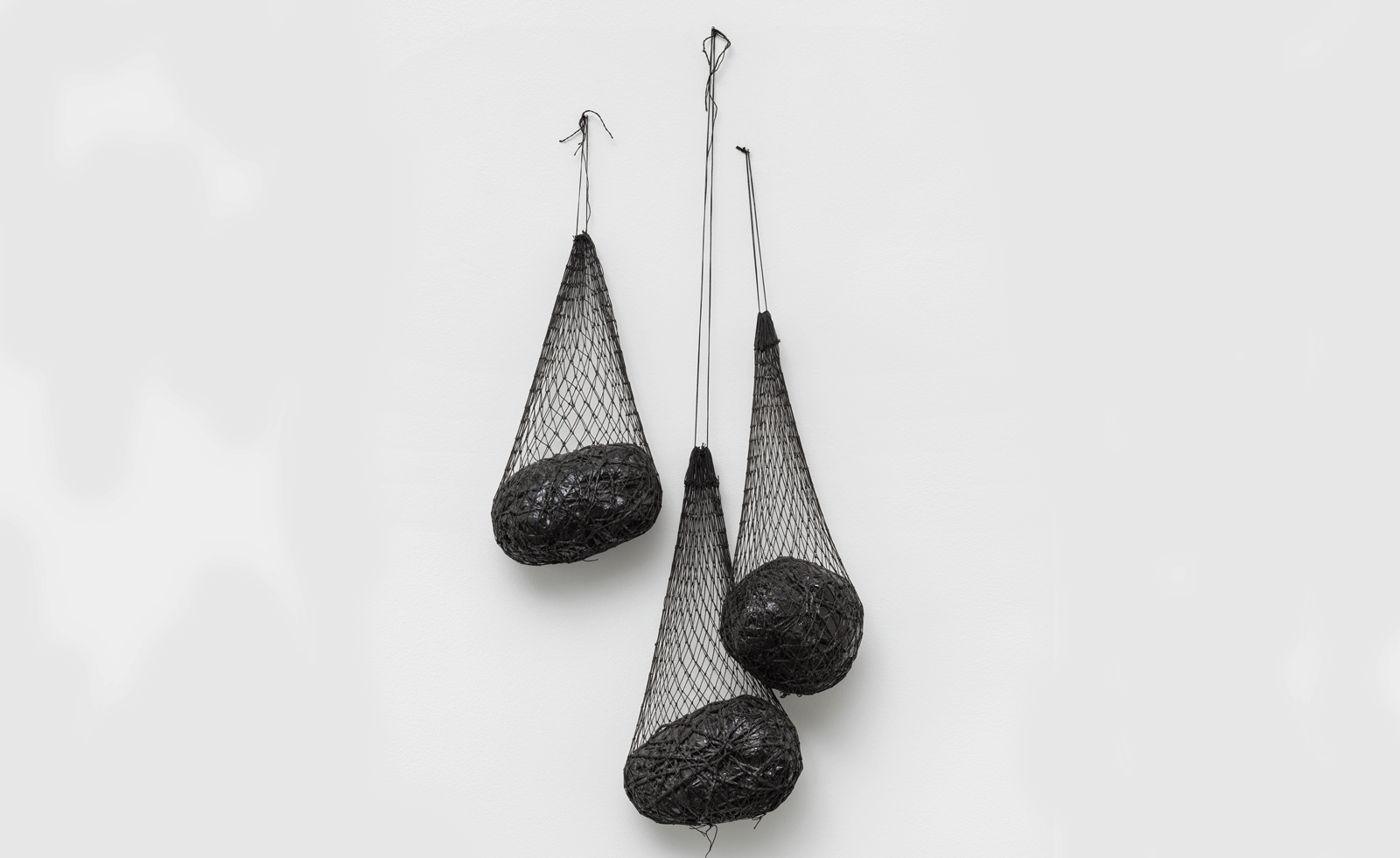 Alice Adams, Louise Bourgeois, and Eva Hesse delve into art’s ‘uckiness’ at The Courtauld
Alice Adams, Louise Bourgeois, and Eva Hesse delve into art’s ‘uckiness’ at The CourtauldNew exhibition ‘Abstract Erotic’ (until 14 September 2025) sees artists experiment with the grotesque
-
 Get lost in Megan Rooney’s abstract, emotional paintings
Get lost in Megan Rooney’s abstract, emotional paintingsThe artist finds worlds in yellow and blue at Thaddaeus Ropac London
-
 Out of office: the Wallpaper* editors’ picks of the week
Out of office: the Wallpaper* editors’ picks of the weekIt was a jam-packed week for the Wallpaper* staff, entailing furniture, tech and music launches and lots of good food – from afternoon tea to omakase
-
 London calling! Artists celebrate the city at Saatchi Yates
London calling! Artists celebrate the city at Saatchi YatesLondon has long been an inspiration for both superstar artists and newer talent. Saatchi Yates gathers some of the best
-
 Alexandra Metcalf creates an unsettling Victorian world in London
Alexandra Metcalf creates an unsettling Victorian world in LondonAlexandra Metcalf turns The Perimeter into a alternate world in exhibition, 'Gaaaaaaasp'
-
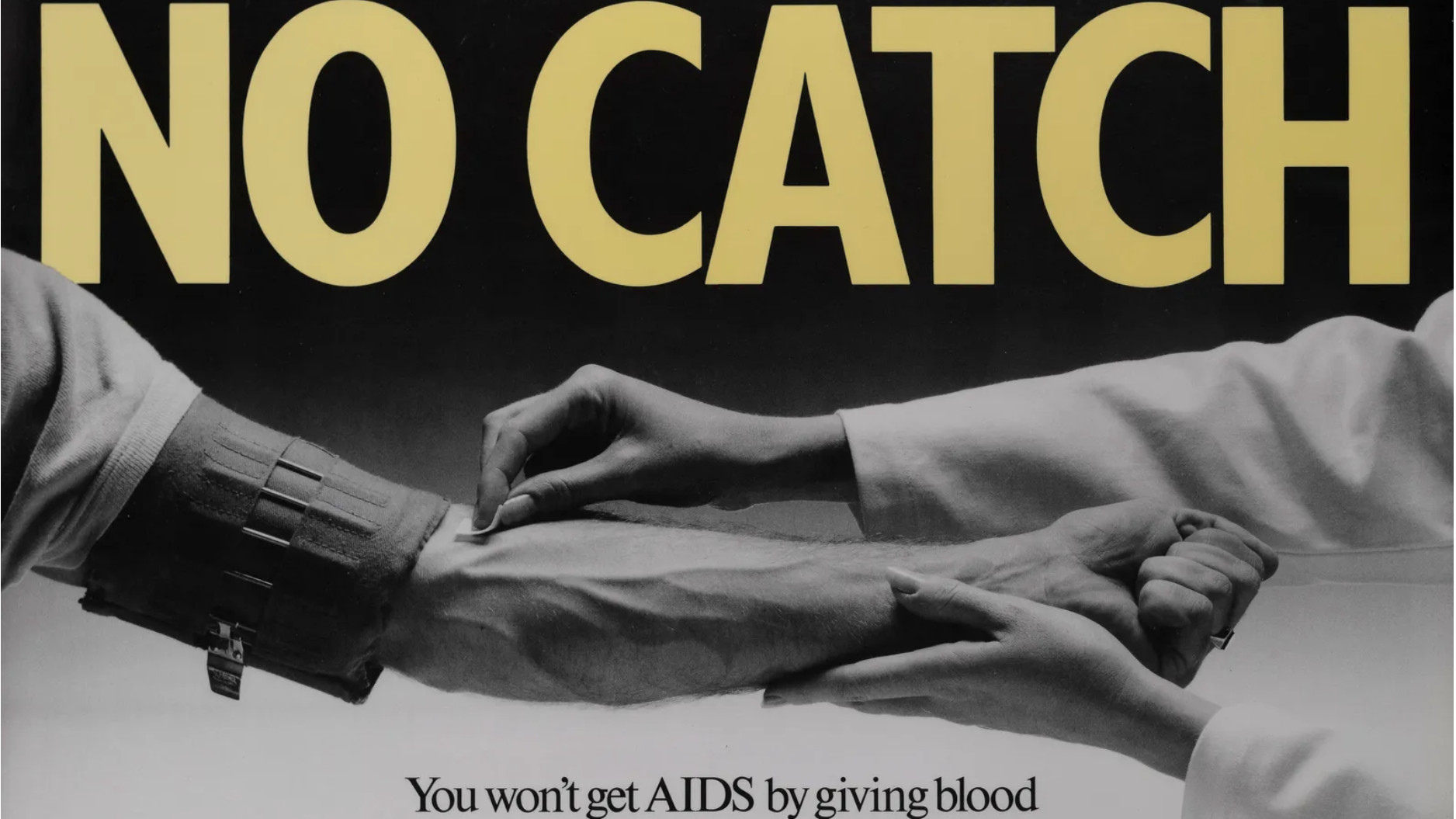 Sexual health since 1987: archival LGBTQIA+ posters on show at Studio Voltaire
Sexual health since 1987: archival LGBTQIA+ posters on show at Studio VoltaireA look back at how grassroots movements emphasised the need for effective sexual health for the LGBTQIA+ community with a host of playful and informative posters, now part of a London exhibition
-
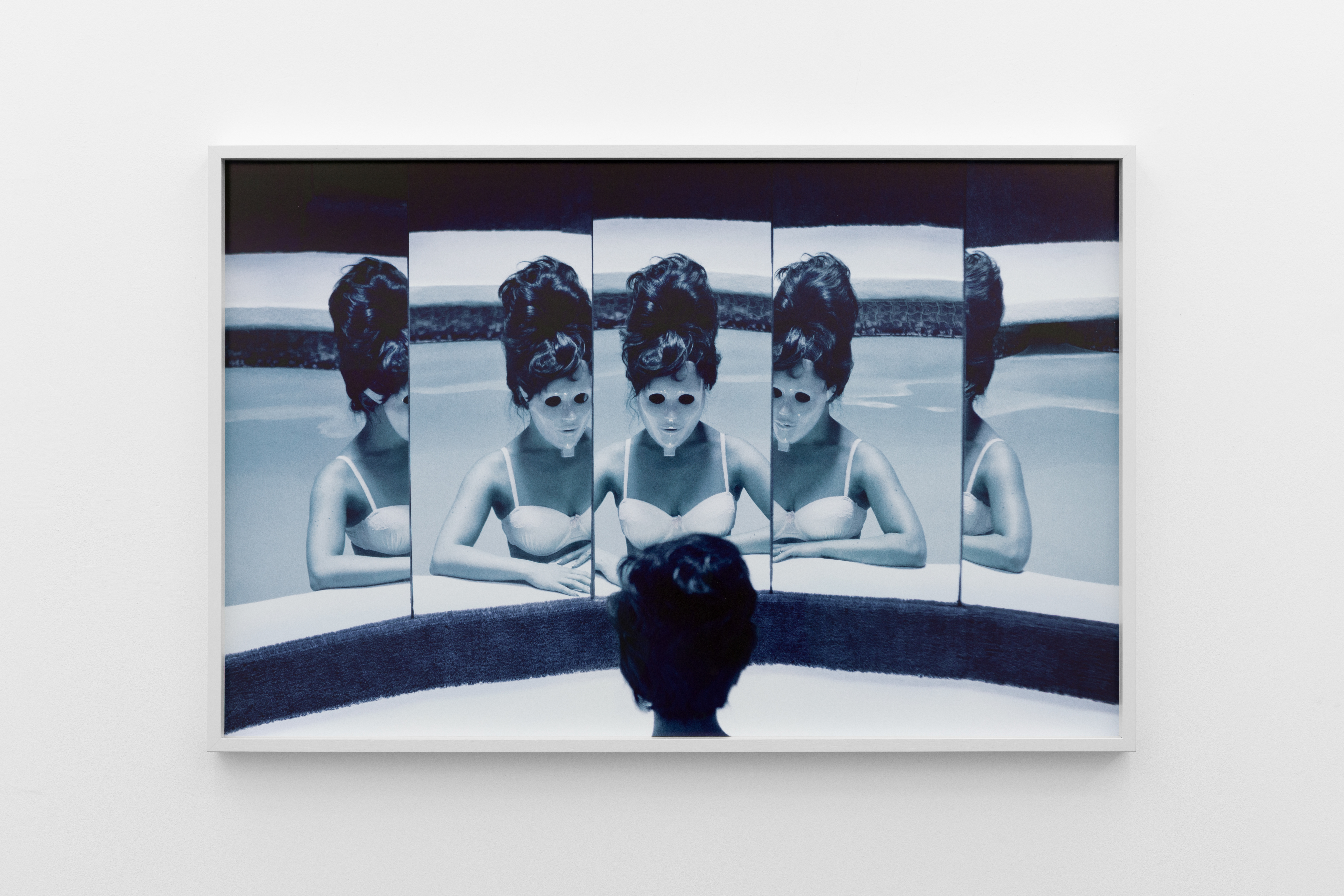 Ten things to see at London Gallery Weekend
Ten things to see at London Gallery WeekendAs 125 galleries across London take part from 6-8 June 2025, here are ten things not to miss, from David Hockney’s ‘Love’ series to Kayode Ojo’s look at the superficiality of taste
-
 Out of office: what the Wallpaper* editors have been up to this week
Out of office: what the Wallpaper* editors have been up to this weekThis week saw the Wallpaper* team jet-setting to Jordan and New York; those of us left in London had to make do with being transported via the power of music at rooftop bars, live sets and hologram performances